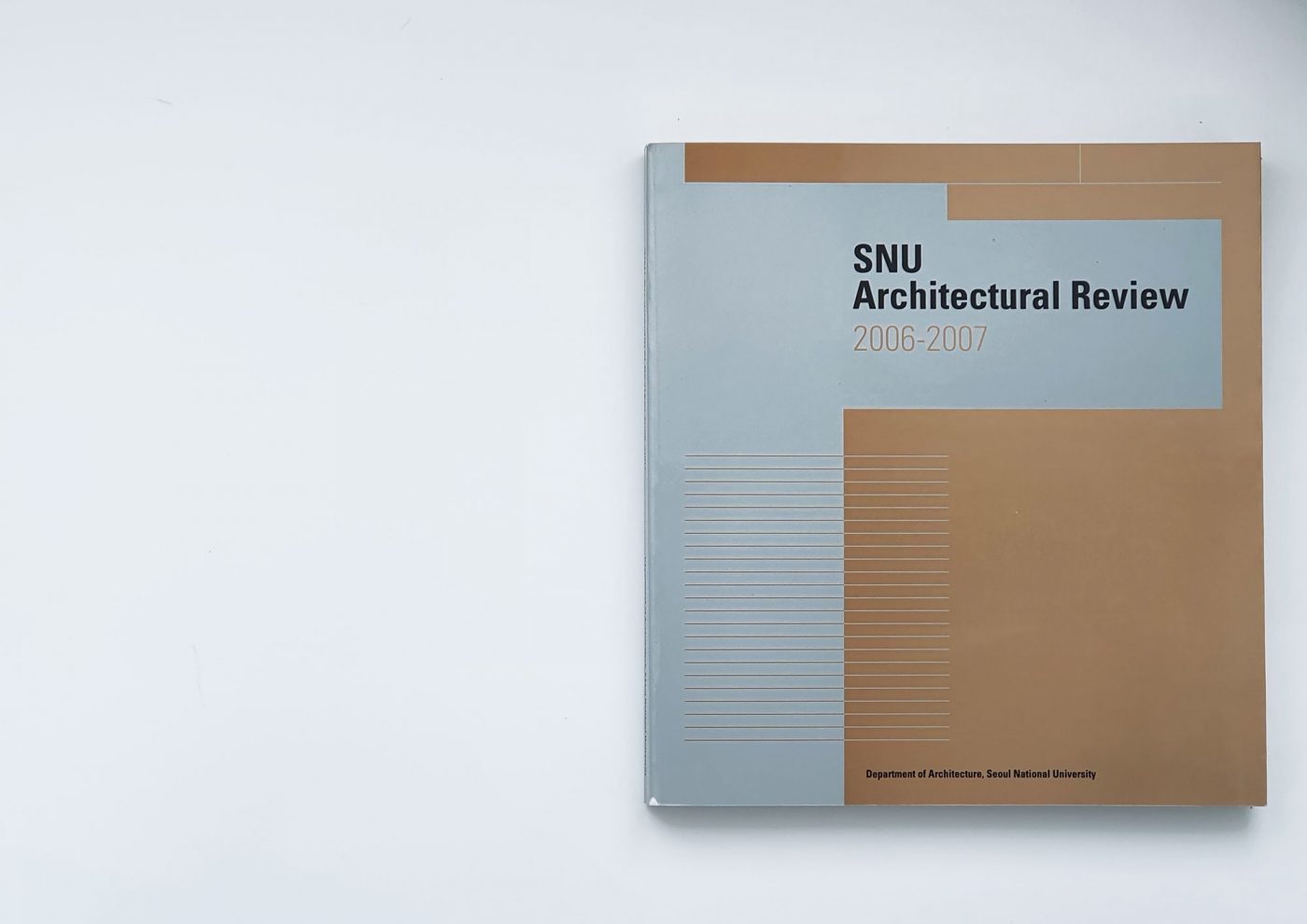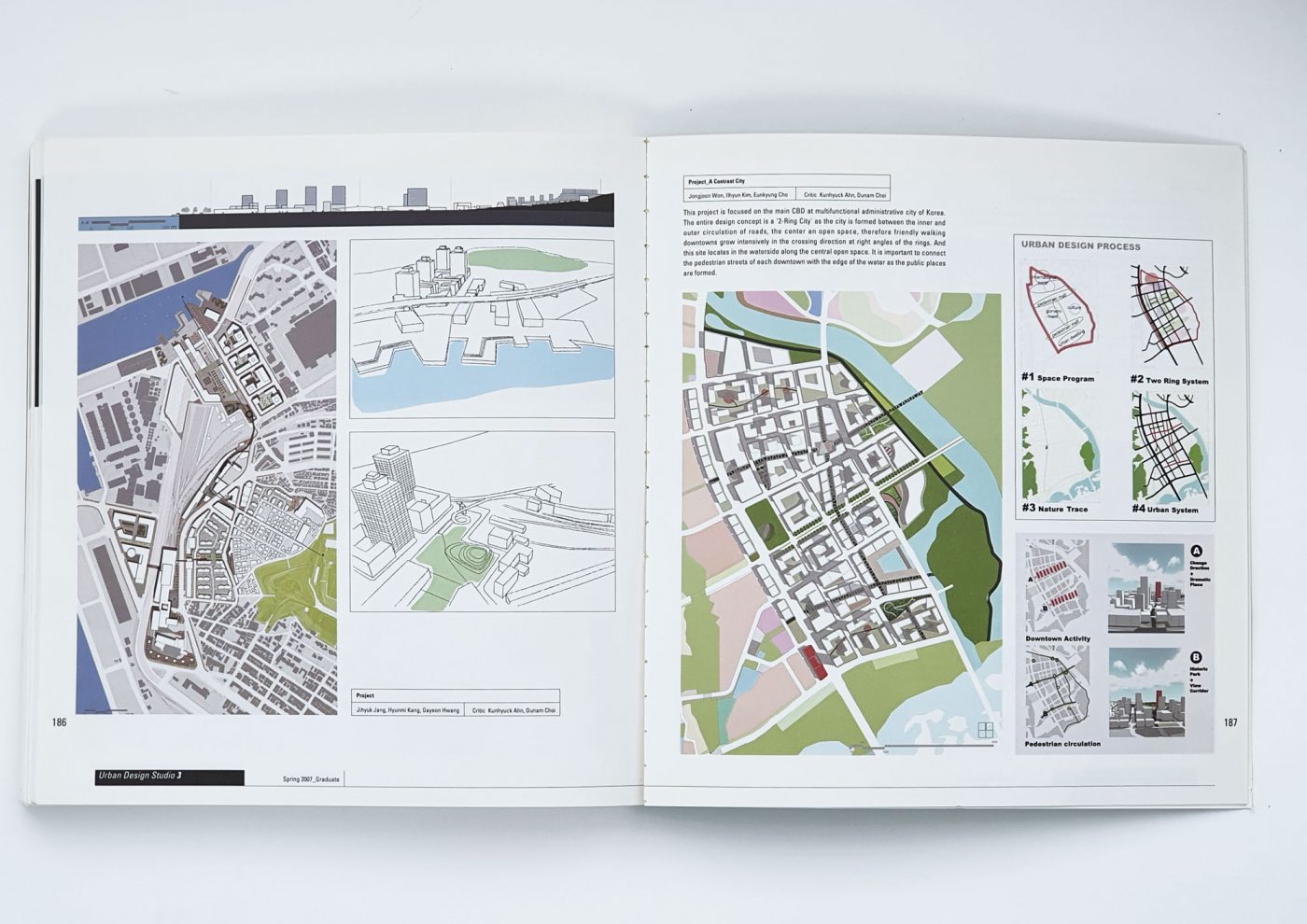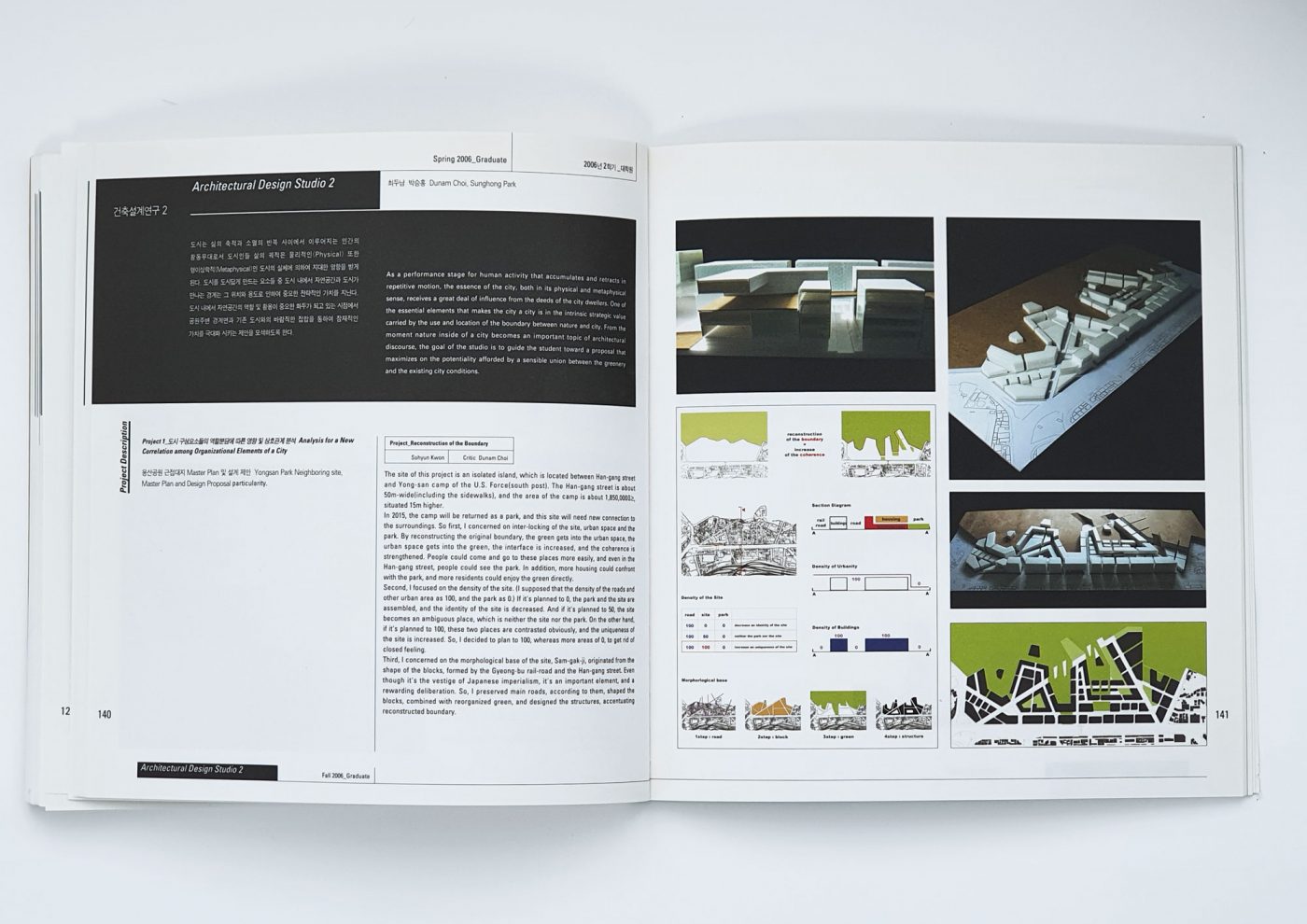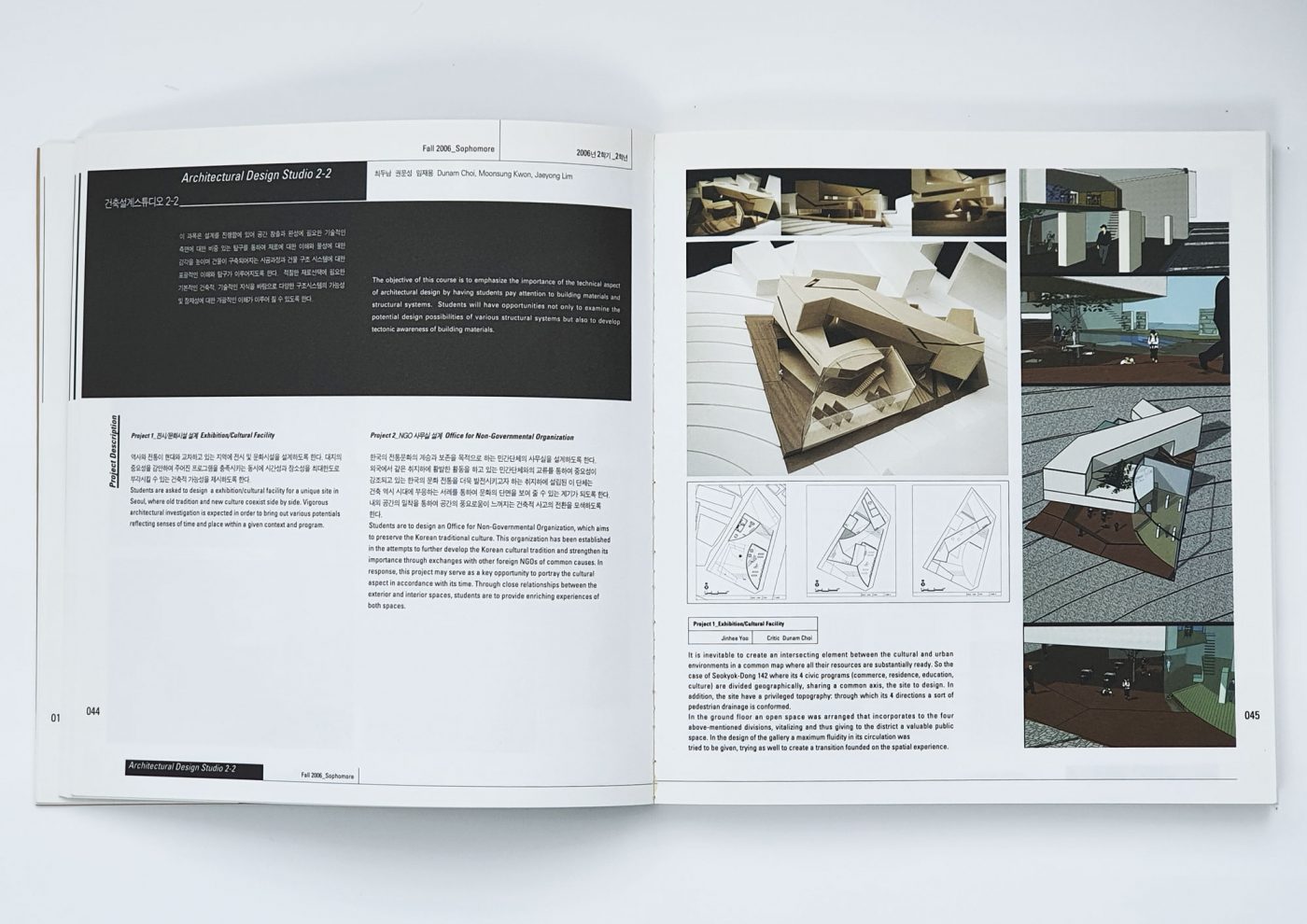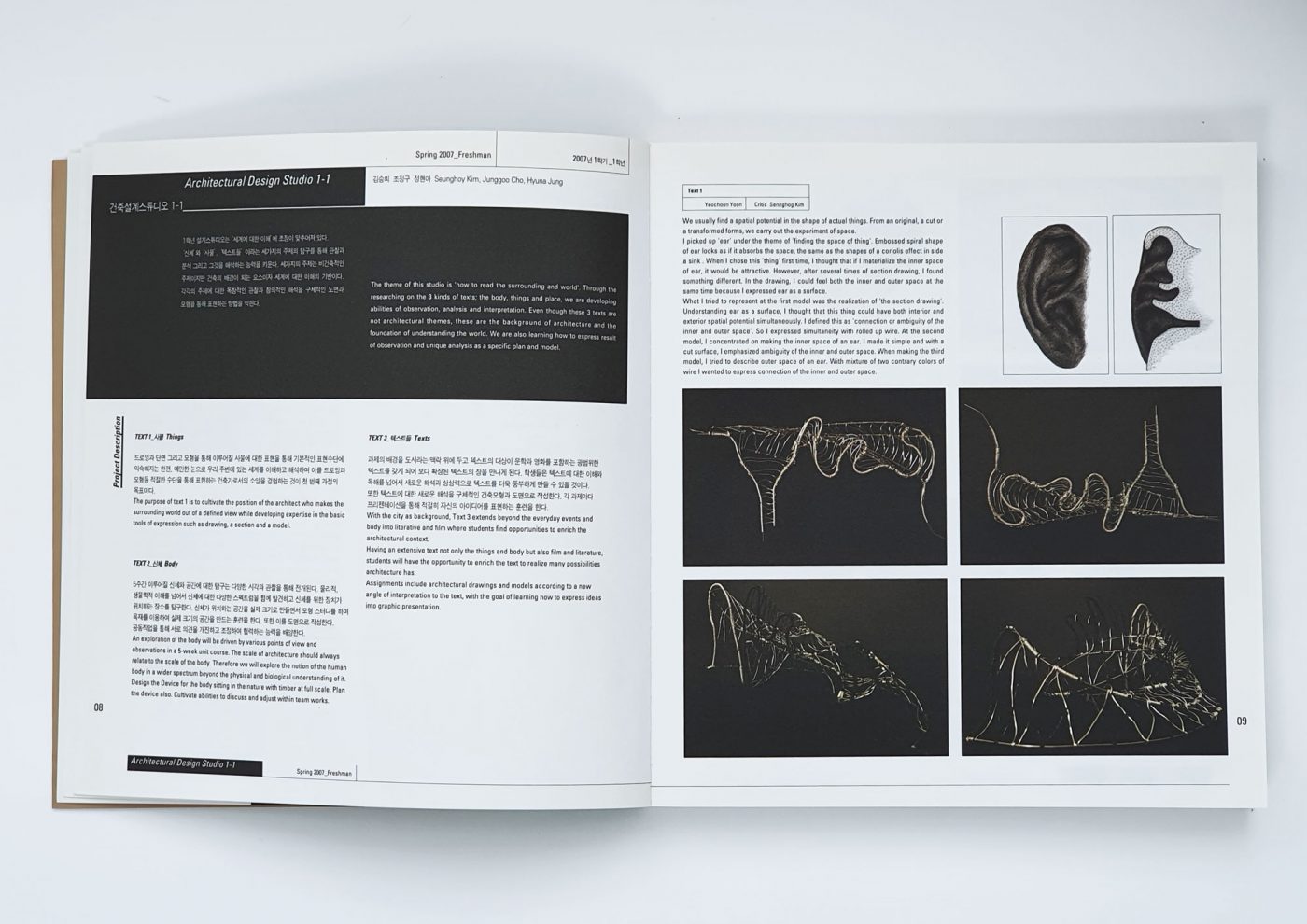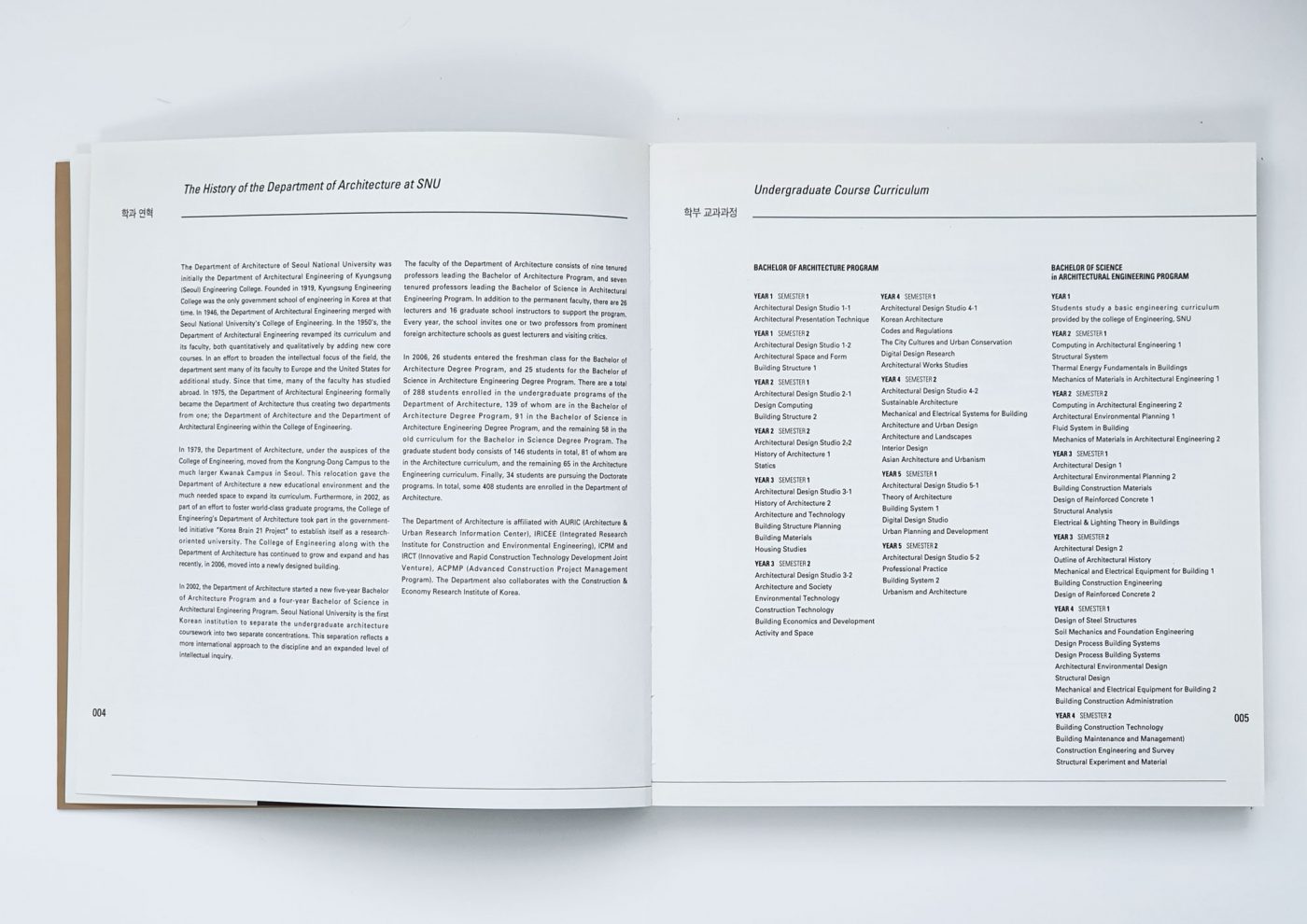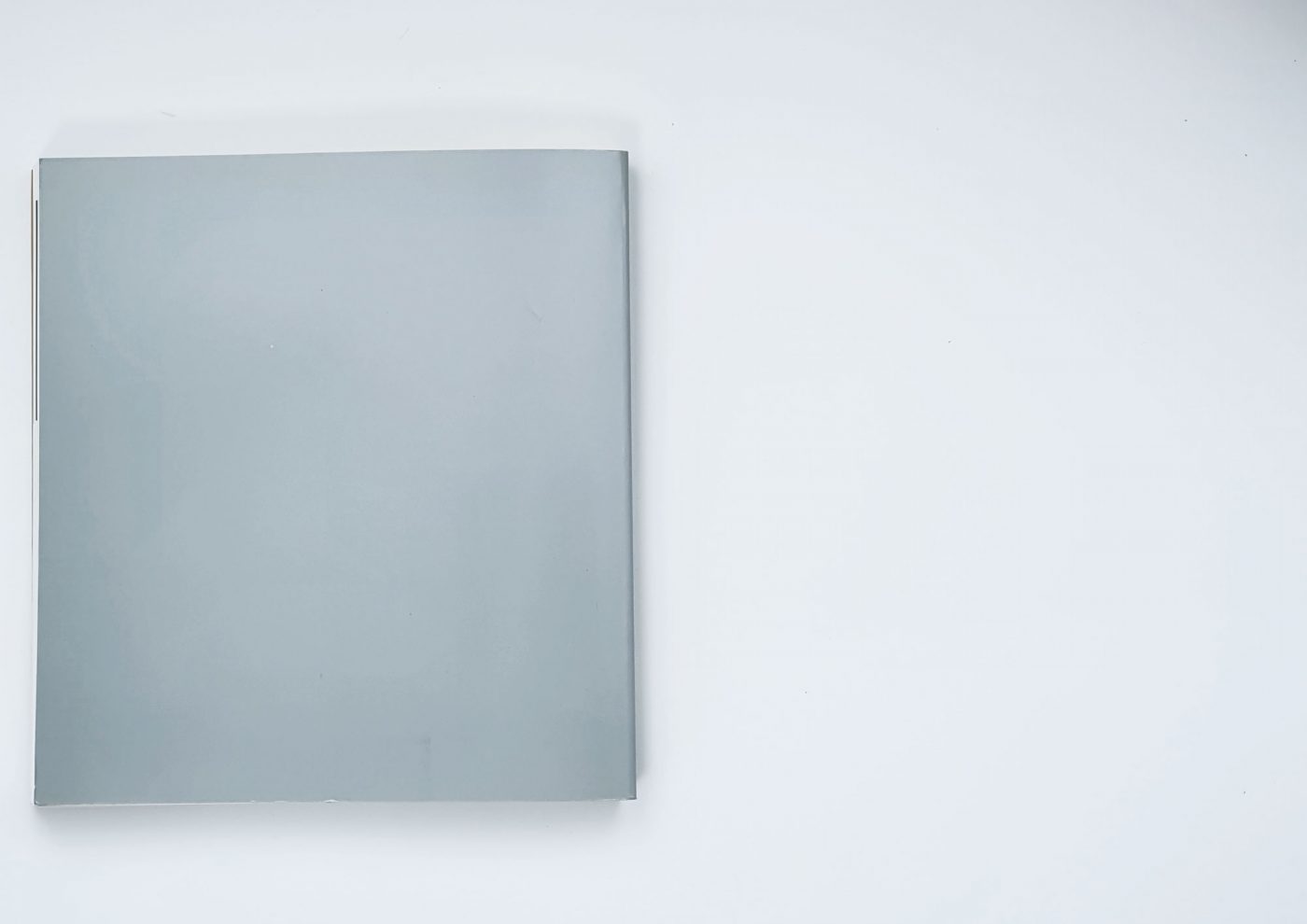SNU Architectural Review
2006 – 2007
2007, 1-1
건축설계스튜디오 1-1
세계에 대한 이해
김승회, 조정구, 정현아
윤여춘, 변희영, 김진원, 문현식
1학년 설계스튜디오는 '세계에 대한 이해'에 초점이 맞추어져 있다. '신체' 와 '사물', '텍스트들' 이라는 세가지의 주제의 탐구를 통해 관찰과 분석 그리고 그것을 해석하는 능력을 키운다. 세가지의 주제는 비건축적인 주제이지만 건축의 배경이 되는 요소이자 세계에 대한 이해의 기반이다. 각각의 주제에 대한 독창적인 관찰과 창의적인 해석을 구체적인 도면과 모형을 통해 표현하는 방법을 익힌다.
The theme of this studio iws 'how to read the surronding and world'. Throught the researching on the 3 kinds of texts; things and place, we are developing abilitiies of observation, analysis and interpretation. Even though these 3 texts are not architectural themes, these are the background of architecture and the foundation of understanding the world. We are also learning how to express result of observation and unique analysis as a specific plan and model.
2006, 1-2
건축설계스튜디오 1-2
세 개의 장소
김승회, 이민아, 정현아
김범중, 이규빈, 이진경, 최한솔, 이준희, 이문영, 박승호, 위희정, 백수연, 한유진, 이명기
세 개의 장소: 첫 스튜디오에서는 사물과 신체 그리고 텍스트에 대한 독해를 통해 세계를 이해하고 그것을 건축적 언어로 소통하고 상상하는 실험을 했다면, 두번째 스튜디오에서는 우리 삶의 배경이 되는 도시를 탐색하고 그 속에서 장소를 만들어내는 작업을 하게 된다. '세계에 대한 이해'라는 주제는 계속되지만, 우리 삶의 구체적인 일상에 보다 더 가깝게 접근하면서 우리 도시가 갖고 있는 다양한 시간과 공간을 체험한다. 5주를 단위(unit)로 해서 북촌, 용산, 강남 등 서울에 위치한 세 지역 안에 도시와 건축이 만나는 작은 장소를 제안한다.
Three Places_While the first studio focused on the architectural dialogue and creativity by exploring and understanding object, body, and text, the second studio involves creating and urban place by searching into the city, the setting of our lives. Through the theme of 'comprehending the world' continues, students are to experience various times and space that the city possessed by approaching a step closer into our daily lives. Through units of five-week term, the three districts of Seoul, such as Bukchon, Yongsan, and Gangnam are to be planned, each as a small meeting place for city and architecture.
2007, 2-1
건축설계스튜디오 2-1
the process of design
최두남, 권문성, 임재용
이문영, 한승은, 이진원, 이지하, 김예리, 이진경, 이병준, 이규빈, 박승호, 이준희, 한보혁
이 과목은 공간을 설계함에 있어 주어진 환경 및 대지를 면밀히 관찰, 분석하고 공간구성의 틀을 만드는 기본적인 건축개념들의 학습을 통하여 사용자의 기능에 대한 요구를 만족시키며 개념이 내재된 조형을 이용하여 건출을 구축하는 방법을 습득하는 것을 목표로 한다. 건물을 포함한 전체 대지를 설계함으로써 대지분석에 대한 중요성을 강조하고 설계 진행과정에서 설계의도를 효율적으로 표현할 수 있는 설득력과 시각적 표현기법의 숙달을 꾀하며 자료 분석을 통한 사용자, 기능 및 프로그램에 대한 철저한 이해가 이루어질 수 있도록 한다.
The objective of this course is to help students to learn the process of design by encouraging them to get familiarized with the basic architectural concepts. Students are asked to carefully analyze the given context and the site, which are important part of design considerations, in the process of establishing architectural concepts that would reflect architect's aesthetic vision. Emphasis will be given on having students engaged in total design process in which students would learn to address such issues as site planning, program analysis and building design.
2006, 2-2
건축설계스튜디오 2-2
시공과정, 건물 구조 시스템
최두남, 권문성, 임재용
유진희, 전홍철, 김현주, 문성준, 장유진, 양시영, 김준홍, 이보름, 허전수
이 과목은 설계를 진행함에 있어 공간 창출과 완성에 필요한 기술적인 측면에 대한 비중 있는 탐구를 통하여 재료에 대한 이해와 물성에 대한 감각을 높이며 건물이 구축되어지는 시공과정과 건물 구조 시스템에 대한 포괄적인 이해와 탐구가 이루어지도록 한다. 적절한 재료선택에 필요한 기본적인 건축적, 기술적인 지식을 바탕으로 다양한 구조시스템의 가능성 및 잠재성에 대한 개괄적인 이해가 이루어질 수 있도록 한다.
The objective of this course is to emphasize the importance of the technical aspect of architectural design by having students pay attention to building materials and structural systems. Students will have opportunities not only to examine the potential design possibilities of various structural systems but also to develop tectonic awareness of building materials.
2007, 3-1
건축설계스튜디오 3-1
다중사용자 / 다중개체
심우갑, 김현철, 이영범
유진희, 김준홍, 이보름, 정유리, 김현주, 양시영, 장유진
3학년 설계스튜디오는 단순 사용자 건물 혹은 단일개체 설계에서 다중 사용자/ 다중개체 설계를 나아감을 목표로 한다. 이를 위하여는 구조는 단일 완결 구조에서 반복구조로, 중규모의 다양한 사용자가 이용하는 기능을 다룬다. 이 과정에서는 다양한 건물관 관계 짓기/건물군과 도시 컨텍스트 사이 관계짓기로 이루어지는 배치계획과 특정한 형태를 고안하는 형태계획이 중점적으로 다루어진다. 기능상으로는 특수한 건축물이 갖추어야 할 프로그램에 대해 숙지할 기회를 제공한다. 이를 위하여 3개의 스튜디오에서는 서로 다른 3개의 프로그램을 상이한 대지조건에 설계하도록 하여 학생들에게 다양한 프로그램을 선택할 수 있는 기회를 제공한다.
Architectural design studio 3-1 has the goal of processing from a simple building for individual user to a complex building for various users. In the assignment, site planning and shape planning will be the main work derived from making relationship among different buildings, building complex and the urban context. Students will have the opportunity for understanding program of specialized buildings. For this, students can select their own program from 3 different projects in 2 groups.
2006, 3-2
건축설계스튜디오 3-2
도시적 컨텍스트와 도시꼴
심우갑, 김현철, 이영범
이명주, 서희원, 박종현, 김형주, 임해진, 류충석, 이다미, 조준희, 안병식
건축설계스튜디오3-1에 이어서 공간과 기능을 동시에 제어하는 연습을 하는 스튜디오이다. 다중 사용자 건물이면서 일시 대량사용이 되는 공연장 건물이 기술적, 공간적으로 필요로 하는 지식을 습득하고 단계별로 공간설계를 진행한다. 특히 반복적인 기능적 실들의 평면과 구조, 모듈, 공간표현을 추가 연습하며, 건축설계스튜디오3-1에서 수행한 공간 연습 기본사항을 숙지하고, 도시적 컨텍스트가 도시꼴을 통해 어떻게 반영되는지 고려하는 연습을 심화된 형태로 반영하도록 한다.
This studio is for practicing how to control space and function followed by architectural design studio 3-1. Students will learn what multi-user-buildings need technically and spatially and process their own design. Especially students will practice plan, structure, module, spatial expressions of repetitive functional rooms and study how urban context is applied to design in advanced way.
2007, 4-1
건축설계스튜디오 4-1
'모여 사는 공간'
김광현, 이성관, 류재은
임해진, 박민환, 임지환, 안병식, 조준희, 정윤해
도시집합주거단지 설계 : 판교 지구 운중 블록 계획 도시 속의 집합주거는 현대도시의 일반적인 주거형식이 되어 가고 있다. 도시 속에서 인간은 어떻게 '모여 산다 는 것을 자신의 공간으로 만들어낼 수 있는가? 구체적인 땅과 자연 속에서 일정한 주거형식을 통해 어떻게 공동체적 주거환경을 형성할 수 있는가, 또는 공동체적인 주거형식을 벗어날 수 있는가? 이에 대한 건축적 해결을 위해 다양한 문화적 배경을 가진 인간에 대한 개인과 집단에 대한 이해와 공과 사의 현대적 연결 관계를 통해서 연구한다.도시 속의 집합주거는 대지가 가지고 있는 가치를 극대화하고, 그것을 지속가능한 실체로 환산하는 방식을 탐구한다. 또한 개체와 그 집합이라는 특별한 형식을 가진 주거단지를 새롭게 해석함으로써 대지가 가지는 지속적 가치에 순응하는 방식을 습득함으로써, 주거건물군 자체가 풍경으로 변하고, 기존의 지형을 새로이 구성하는 방식을 제안한다.
Multi-family housing in urban areas is becoming a typical residential type in the present urban conditions. How can a human-being imply the fact of 'living together' when articulating their own space in urban areas? How can human-beings form a commueat residential environment with a certain residential type situated in a specific site surrounded by the nature? Or, can human-beings live outside of the boundaries of a communal residential environment? For an architectural solution, this studio studies about understanding the individuals and groups with multifarious cultural backgrounds and about a modern relation between private and public. Multi-family housing in urban areas maximizes the value of its containing site. And further more, this studio studies a method, converting the housings as sustainable substances. By reproducing the residential block with a unique type, planning individuals and its group, and by obtaining the method to adapt the sustainable value the site contains, the residential building itself is modified as a scenary and suggesting a method to reorganize the existing geographical features.
2006, 4-2
건축설계스튜디오 4-2
프로그램, 현대도시, 100명, 표현공간
김광현, 이성관, 류재은
이새롬, 백윤진, 조경민, 이용재, 문경진, 최진혁, 장지을, 허규영, 이재근
주제 도시인 100명의 표현공간 과제물에서 제시할 1. Program (공간이 배열되기 이전에 프로그램이 있다. 이전에는 평면을 구성한다고 말했으나, 이제는 프로그램을 만든다고 말한다. 용도와 기능에 대한 분석이 아니라, 프로그램을 만들고 해석함으로써 설계자의 다양한 해석이 중시된다.) 2. 현대도시 (현대도시는 확장을 계속하고, 건축의 기능은 도시 속에 파종되고 있다. 건축은 도시를 구성하는 한 가지 요소가 아니라. 도시 그 자체를 내포해 가고 있는 것이다.) 3. 100명' (단순히 건물의 규모만을 상정하기 위한 것이 아니라, 100명에 대한 개인적 또는 다수인의 행위와 그것이 만들어내는 공간적 배열에 주목하기 위함이다.) 4. 표현공간('표현'이라는 다양하면서도 불연속한 경험을 통해 우리 사회에서 일어나는 행위의 패턴을 포착하기 위한 것이다.)이라는 4가지 키워드를 참조하면서, 현대도시의 현상 및 주어진 영역의 도시적 상황을 주체적으로 해석하고, 그 해석을 바탕으로 현대 도시를 살아가는 100명의 사람이 도시 속에서 표현 하고자 하는 공간을 프로그램으로 해석하며 설계한다.
Topic: 'Space of Expression' for 100 urbanites Program takes precedence over space. Now we say it to make ""program', not to compose the plan as before. Usually we regard program as function or use, but it rather a more flexible concept or strategy. We do not exactly analyse function or use and compose a plan, but now we program and interpret it, Program is related to function or use, more or less indirectly allows architect's various interpretations. Another meaning of program is therefore conceived as a social one whose primary function is to criticize established building types through the drift from institutionalized one. Generally program is realized as action or activity. However the studio will be to explore the architectural and urban potential of an approach to escape from the present building types regarded as a matter of course, which asserts that the further we go from the inside based on action or activity, the further we get out of the city. Every building imagines a city and interchanges with each other on the variable of time directly related to action or activity.
2006, 4-2
실내설계
실내장식
김현철
마승범, 권도엽
실내장식 설계는 흔히 이미 조성된 공간에 가구와 마감재를 새로 설계해 넣는 것이라고 이해한다. 이 과목에서는 조성된 공간은 공간구축 단계로 보고 가구나 마감재 설계는 공간 표현 설계라 보아 실내장식 설계는 이 두 작업이 하나로 어우러지는 설계라고 규정한다. 실내 공간이 기능이나 장식위주로 전락하는 것을 막고 각 학생의 설계 작업에 상상력과 표현력을 불어 넣기 위해 시나리오 주제를 선택하게 한다. 시각적인 측면에서만 다루었던 실내 설계를 넘어 작은 규모에서 계획, 재료, 가구, 시공, 설비 등이 통합되는 과정을 연습한다. 이를 위해 소규모 또는 중규모의 주택 또는 상업 공간 내부를 설계하고, 이에 필요한 재료, 가구, 기계 및 전기 설비가 어떻게 조형적으로 통합되어야 하는가를 습득한다. 아울러 실내공간설계의 역사와 가구의 변천사를 알아보고, 소규모의 커뮤니티 시설 또는 공공건물의 실내중 하나를 계획하고 이에 대응하는 재료, 마감 등 각종 실무적 문제를 연계하는 능력을 기른다.
Interior design is usually understood as inserting furniture and finishing material to an already made space. In this course, consider given space as stage of space construction and designing furniture and finishing material as spatial expression and interior design is defined as mixture of these two. Prohibiting interior space to become decoration oriented, students will select their own themes of scenario to put imagination and expression into their works. Beyond current interior design approached mainly in visual aspect, students will practice whole process of integration of small-scale design, material, furniture, construction and equipment. For this students will design small or medium-size residence or interior space of commercial building and learn how material, furniture, mechanical and electrical equipments should be integrated in forms. Also examine the history of interior design and furniture, design interior space of a small scale community facility of public buildings, nurture the ability of connecting practical problems such as material and finishing methods.
2007, 1-1
건축표현기법
공간구성의 기본개념
최두남, 전봉희
박우린, 최원아, 변희영, 박미희, 박세준, 박찬호, 경연성, 윤여준
이 과목은 지적 및 시각적 탐구를 통하여 공간구성에 대한 기본개념을 이해하고, 이를 다양한 건축기법을 통하여 표현할 수 있는 능력을 함양하는 것을 목적으로 한다.
The objective of this course is to encourage students to understand the basic principles of spatial organization through series of visual and intellectual excercises and to expose students to various architectural graphic skills to facilitate effective communication of design intentions.
2007, 3-1
공학설계 1
드로잉
안우성, 임상진
김상우, 최문정, 이장원, 이예지
건축공학을 전공함에 있어서 기본이 되는 드로잉과 기초적인 설계를 통하여 도면작성요령과 도면을 이해하는 방법을 익힌다. 도면은 건축물로 표현하는 방법이며 설계. 구조, 시공분야에 종사하는 사람들의 의사소통의 매개체로서 매우 중요하다. 도면을 읽고 머릿속에 3차원의 그림을 그릴 수 있는 능력이 필요하다. 이를 위하여서는 먼저 측정과 스케일에 대한 개념을 가지고 간단한 도면을 작성하며 설계를 통하여 이를 체득하게 한다.
Through drawings and basic design based on the architectural engineering, we learn how to draw and comprehend the blueprint (plan). The blueprint (plan) is very important since it is a way to express a building and a medium among people working in many other positions ? design, structure, construction, and etc. We required the ability to read a blueprint (plan) and to come across one Øs mind the spatial view. To achieve this ability, we learn to design and draw the blueprint (plan), holding the concept of dimension or scale.
2006
졸업설계
졸업설계
신요한, 김대일, 이준형, 양완석, 김태훈, 이주한, 김민진, 김인호, 노주희, 김도윤, 김지하, 김정은, 김한중, 박재만, 이준화, 박종철, 김진휴, 홍성조, 김정현, 복진주, 곽서윤, 문승오, 조영실, 차은정, 홍희성, 문주혁, 강순필, 박한나, 김상희, 박주현, 정창호
졸업설계는 자신의 건축적 사고를 독자적으로 발전시키고, 이를 현실의 조건 위에서 구체적으로 실현하기 위한 작업입니다. 이를 위해 수강지는 각자 현대도시를 분석하고그 현대도시가 우리의 일상생활에 어떤 경로를 거쳐 건축공간과 형태에 영향을 미치는지를 검토합니다. 그리고 도시의 일각에 서게 될 대지에 주목하면서 대지에 얽힌 다양한 사람의 흐름, 물리적인 문맥, 자연환경에 대한 고려를 어떻게 설정하고 있는지를 건축적 어휘를 사용하여 구체화하여야 합니다. 또한 자신이 설정한 프로그램을 논리적으로 해석하는 능력을 발전시켜 건축가라는 직업인으로서 앞으로 지속해야 할 자신의 가치를 발견하도록 합니다. 더욱이 졸업설계에서는 건축디자인의 기초요소만이 아니라, 구조와 설비 등 기본적인 엔지니어링의 조건도 아울러 생각하여 반영하여야 합니다.
The graduatioon exhibition is a task to develop students' architectural thoughts in their own way and to realize the thoughts specifically in actual conditions. Students analyze modern cities and investigate how those cities affect to architectural spaces and shapes through what channel in our daily life. Furthermore, students embody their consideration for human flow, physical context and natural environment attending sites as the tip of the city. Students should develop their ability to analyze logically the program set up by themselves. That is the way to find their values that should be kept up as a professional architecture. The graduation exhibition reflects basic engineering conditions - structures, facilities and so on - as well as basic components of architectural design.
2007, 대학원 1학기
건축설계연구 1,3
현대전시공간체계와 공간구성
최두남, 피터최, 김현철
이황, 나안나, 민지윤, 김대일, 김수범, 김정식, 정황기, 이상학, 김정섭, 한창수
사이버시대가 도래한 시점에서 새로운 삶의 형태를 주도할 수 있는 주거의 방법을 제안하도록 한다. 주거에서 추구되어온 전통적인 가치의 변화를 반영할 수 있는 새로운 패러다임을 모색하는 과정을 통하여 역사성과 공공성의 의미를 재조명하도록 한다. 또한, 현대사회는 문화의 시대라 할 만큼 한 나라의 문화가 사회전반에 미치는 영향이 각별한 상황이다. 특히 글로벌 시대에 즈음하여 독특함이 두드러지는 문화의 창출 및 이를홍보, 보존, 전시하여 관련 전문문야는 물론 시대를 반영하는 역동적인 문화를 일반대중들에게 제대로 전달시킬 수 있는 새로운 전시체계와 물리적 여건을 조상하는 것이 절실하게 필요한 사항이다. 전시시설 설계에 있어 기존의 전시시설을 분석하고 이를 토대로 향후 추구되어야 할 전시시설 설계의 체계적, 물리적 패러다임을 건축설계를 통하여 모색하도록 한다. 현대 전시 공간체계의 특징으로 나타나는 자유로운 구성을 주조로 한 전시공간, 건축표현 수단으로서의 전시공간, 공간위계질서에 따른 전시공간 등을 분석하고 전시공간의 새로운 패러다임을 제안하도록 한다.
Students will suggest dwelling methods which could lead new life styles in cyber society. They can reinvestigate the meaning of history and publicity through finding new paradigm which can reflect traditional values have been pursued in dwelling. Also, we can call contemporary society as 'an age of culture' since culture of a country has enormous influence on overall society. Especially new exhibiting systems and physical circumstances with related professional fields are necessary for transmitting the active culture of contemporary society to the general public. Analyze current gallery facilities and research the paradigm of future gallery systems. Suggest the new paradigm by analyzing exhibition spaces made with free form, as way of architectural expression, through space order.
2006, 대학원 2학기
건축설계연구 2
공원과 도시의 경계화 접합
최두남, 박승홍
권소현, 김경율, 김정섭, 박정연, 나안나, 김정채, 최영준, 이민우
도시는 삶의 축적과 소멸의 반복 사이에서 이루어지는 인간의 활동무대로서 도시인들 삶의 궤적은 물리적인(Physical) 또한 형이상학적(Metaphysical)인 도시의 실체에 의하여 지대한 영향을 받게 된다. 도시를 도시답게 만드는 요소들 중 도시 내에서 자연공간과 도시가 만드는 경계는 그 위치와 용도로 인하여 중요한 전략적인 가치를 지닌다. 도시 내에서 자연공간의 역할 및 활용이 중요한 화두가 되고 있는 시점에서 공원주변 경계면과 기존 도시와의 바람직한 접합을 통하여 잠재적인 가치를 극대화시키는 제안을 모색하도록 한다.
As a performance stage for human activity that accumulates and retracts in repetitive motion, the essence of the city, both in its physical and metaphysical sense, receives a great deal of influence from the deeds of the city dwellers. One of the essential elements that makes the city a city is in the intrinsic strategic value carried by the use and location of the boundary between nature and city. From the moment nature inside of a city becomes an important topic of architectural discourse, the goal of the studio is to guide the student toward a proposal that maximizes on the potentiality afforded by a sensible union between the greenery and the existing city conditions.
2007, 대학원 1학기
실내장식특론
실내건축
김현철
김경율, 나안나
건축 내부공간 설계방법을 이론 및 실기를 통해 집중적으로 탐구하는 과정이다. 실내장식을 구축공간에 공간표현을 부여하는 과정으로 파악하고 공간구축 작업과 공간 표현 과정의 이론적 배경과 실체를 학습한다. 매학기 다른 시나리오가 제시되며 공간 시나리오 작성과 공간체계 구축을 각각 실험하고 이들을 통합하는 방법을 모색하는 과정에서 예비 건축가들이 자기 고유의 공간설계능력을 계발하도록 한다.
The studio explores the design process of interior architecture through theory and practice. In interpreting the interior decoration as a spatial representation of its construction, students are to grasp an understanding of the spatial design through theoretical background and practice. With a different scenario in each semester, students are expected to provided a space scenario and experiment with system constructions, while developing their own ability to design the space by combining the processes.
2007, 대학원 1학기
건축계획연구
총체적 건축계획
김현철
김경율, 김정섭, 이상학, 한창수
건축설계의 기반을 이루는 총체적 건축계획에 대한 전문적 연구를 목표로 한다. 이론계획학의 한계에 머물지 않고 건축가들이 설계할 때 실제로 부딪쳐 온 작품구성의도, 작업전략, 공간 및 형태구성 방식을 광범위하게 분석함으로써 건축작품에 대한 이해를 넓힘과 동시에 그 결과를 자기 건축에 도입함으로써 독창적인 건축언어를 수립할 수 있는 기초와 근거를 연구한다.
This course aims to study professionally on comprehensive planning of architecture which forms the foundation of architectural planning, to broaden the width of understanding of architectural works through analyzing the ways of forming space and its shape beyond the limit of theoretical planning, and at the same time studies the groundwork to set up students' own creative language of architecture by introducing the studied results into students' works.
2007
워크샵
서울을 덮는다
켄 호그, 앤디 파이, 김종민
나안나, 박재민, 권도엽, 임지영, 최동희, 양영준, 홍순목, 이민우, 김동욱, 이소연, 이선우, 황현종, 박종철, 남궁지희, 박도현, 구소영, 문대호, 박창희, 김대일, 마스범, 임리사, 강순필, 이규남, 김한중, 서원기, 박민환, 조성현, 강동화, 문주혁, 이준화, 이용재, 조준희, 조가영, 박한나, 김도윤, 김지하, 최진혁, 유효은, 김지혜
서울대학교 건축학과는 매년 세계를 무대로 활발한 활동을 벌이고 있는 저명한 외국 건축가와 건축 엔지니어를 초청하여 Masterclass Workshop을 개최하고 있습니다. 올해는 세계적인 설계그룹 Foster + Partners의 Design Partner인 Ken Hogg와 Associate인 김종민씨, 세계적인 건축엔지니어링 회사인 ARUP의 Andy Pye 박사가 워크샵을 진행하게 됩니다. 2007 Summer Masterclass Workshop의 주제는 Equilibrium-Enclosed City입니다. "서울을 덮는다" 는 주제로 환경과 기술이 건축 속에서 통합되는 과정을 탐색하고 현대도시의 첨예한 이슈를 탐구하고자 합니다.
The department of architecture in SNU annually holds a Masterclass workshop with outstanding foreign architects and architectural engineers. This year, Mr. Ken Hogg, a design partner in Foster + Partners, Dr. Andy Pye, an associate in ARUP and Jongmin Kim, an associate partner in Foster + Partners are invited for the workshop. The main theme for 2007 summer Masterclass Workshop is 'Equilibrium-Enclosed City'. Students will explore the process of integration of environment and technology in architecture and investigate radical issues in comtemporary cities.
2007, 대학원 1학기
도시설계스튜디오 1
청계천 주변 재개발
김광중, 김정훈
박승은, 김민진, 조승화, 강승현, 김희철, Seasbyeol Choi, 박승은, 주병철, 홍성조
도시설계 스튜디오 1의 목표는 학생들로 하여금 도시설계와 관련한 다양한 이슈들을 이해하게 하고, 도시문제에 대한 디자인적인 해법을 만들어내는 과정을 습득하도록 하는 것이다. 올해의 스튜디오에서는 학생들에게 청계친 주변 재개발 지역들이 과제로 주어졌다.
The purpose of the urban design studio 1 is to build systemic knowledge of the basic process of addressing complicated urban problems upon understanding of various issues about urban design. This year, the course provides students with the redevelopment areas near 'Chunggae-chun' as the site.
2007, 대학원 1학기
도시설계스튜디오 2
집합주거단지 : 도시커뮤니티, 지속가능성, 도시적인 다양성
김기호, 최명철
강현미, 김민보, 홍경식, 차민희, 정요한, 조성화
대규모 주거단지의 계획 및 설계를 위해서 설계자는 다양한 스케일에서 나타나는 물적 환경의 문제를 효과적으로 다를 수 있어야 한다. 도시설계 스튜디오 2 과목을 통해서 학생들은 도시커뮤니티의 의미, 지속가능성, 그리고 우리의 도시환경에 대해서도 도시적인 다양성을 유지하기 위한 방법에 대한 설계 대안을 도출하기 위한 방법을 익히게 된다. 이 과목에서는 설계안을 도출하는 과정에서 참가자들은 하나의 주거단지가 내적완결성을 가지면서 주변 도시환경과 조화를 이루도록 하기 위한 설계 아이디어를 만들어 내는 데에 중점을 두게 된다.
For designing a large residential development, a urban designer should be able to deal with conflicts of physical environment in various scales. Through the urban design studio2, students develop their own methodology of building design solutions which can enhance variety and substantiality of our urban environment. During the course, students are encouraged to develop design ideas that can achieve two goals: To make a self-contained residential community and to harmonize conflicts among a residential estate and surrounding urban environments.
2007, 대학원 1학기
도시설계스튜디오 3
신도시 계획과 설계
안건혁, 최두남
정요한, 김효정, 백선영, 김용진, 김호기, 장지혁, 강현미, 황가연, 원종준, 김일현, 조은경
도시설계 스튜디오의 최종단계로서, 도시설계 스튜디오 3에서 학생들은 신도시의 계획 및 설계를 수행하게 된다. 이 과정에서 참가자들은 광역적 스케일의 입지분석, 대중교통 체계와 도로 배치, 다양한 도시 기능간의 관계 설정, 오픈스페이스 시스템의 설계 그리고 건축 환경의 질을 제어하기 위한 방법 등 신도시 계획을 위한 다양한 단계를 직접 수행한다.
As a final phase of studio courses, the urban design studio 3 provides students with intensive experiences of designing a new town. During the studio course, students should engage in various stages of the new town design, including a regional-scale site analysis, layout of mass-transportation system and road system, configuring relationships among various urban services and residential estates, designing open space system and controlling quality of architectural environment.
